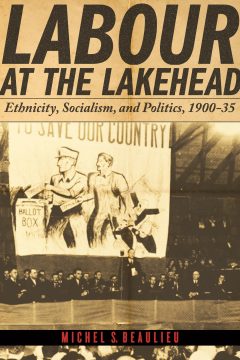In 1919 there were so many Bolsheviks in Port Arthur, Ont. the local MP called it one of Canada’s worst “breeding places of revolution.” The mayor calculated three-quarters of local Finnish immigrants were socialists. In neighbouring Fort William they held a memorial for Lenin in 1924 and sang the Internationale.
The twin cities on the north shore of Lake Superior were “storm centres in Canadian working-class history,” writes Michel Beaulieu, associate professor of history at Lakehead University.
It is popular now to dismiss Canadian communism as a historical curiosity peopled by colourful idealists. In its day it was serious business. Churchill scorned fifth columnists like the Lakehead Leninists as Moscow “missionaries”: “Obscure people awaiting the day when they hope to be the absolute masters of their fellow countrymen and pay off old scores.”
It was no joke on the north shore, in what is now Thunder Bay. “The RCMP and Ontario Provincial Police flooded the region with undercover officers in an attempt to infiltrate the movement,” Beaulieu recounts in Labour at the Lakehead. The twin cities were “a metropole for a resource-rich hinterland,” a choke point for cross-Canada railways that monopolized shipments of Western grain and Eastern factory goods.
Beaulieu notes the 1917 Russian revolution inspired a “spirit of revolt” so palpable in Fort William, a local elevator company petitioned city council to lay on extra police for fear that Reds would seize the works. As late as 1930 a local candidate for alderman campaigned on a platform of “sharper class struggles.”
Beaulieu documents the minutiae of local radical groups and their ultimate failure. The twin city Reds could not even elect an MP: “The sum of their efforts came to less than the immense sacrifices and energies they had poured into them.”
Most poignant is Beaulieu’s brief account of “Karelia fever,” the come-to-the-motherland campaign that saw hundreds of Lakehead Bolsheviks leave Ontario for the Karelia Autonomous Soviet Republic in 1931-32. They were among thousands of socialists who fled the west in Depression years, believing a bright future could be found in Stalinist Russia – and surrendered their passports to find it.
“Pathetic,” wrote newspaperman Eugene Lyons, who documented their plight in his 1937 classic Assignment In Utopia: “The period of disillusionment ranged from two weeks to a year, and the embittered regrets were in direct proportion to the fervor of the original renunciation. It was the finality of their act, the realization that they were trapped and held and could never leave Russia again, which worked on these people, even more than their disillusionment with the USSR. They would come to my office and weep bitter tears.”
In Petrozavodsk the north shore radicals helped erect a monument that still stands, a grotesque statue of Lenin as tall as a house. At the Lakehead there is no monument at all.
By Holly Doan
Labour at the Lakehead: Ethnicity, Socialism and Politics 1900-35 by Michel Beaulieu; UBC Press; 316 pages; ISBN 978-077-4820-028; $32.95






